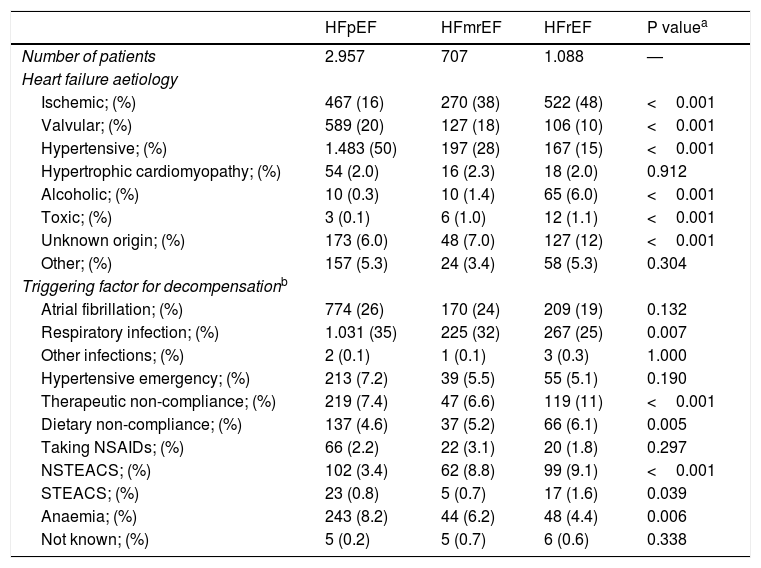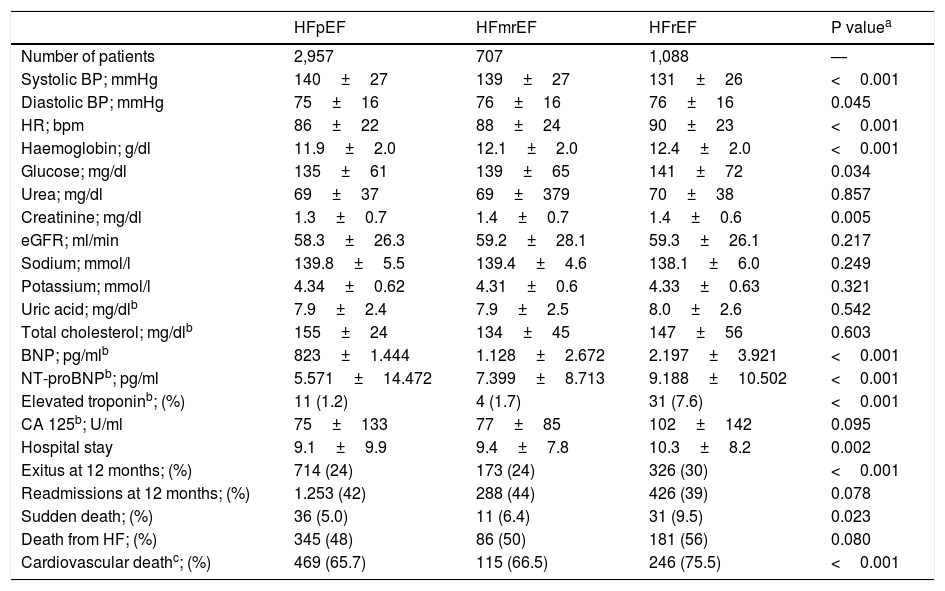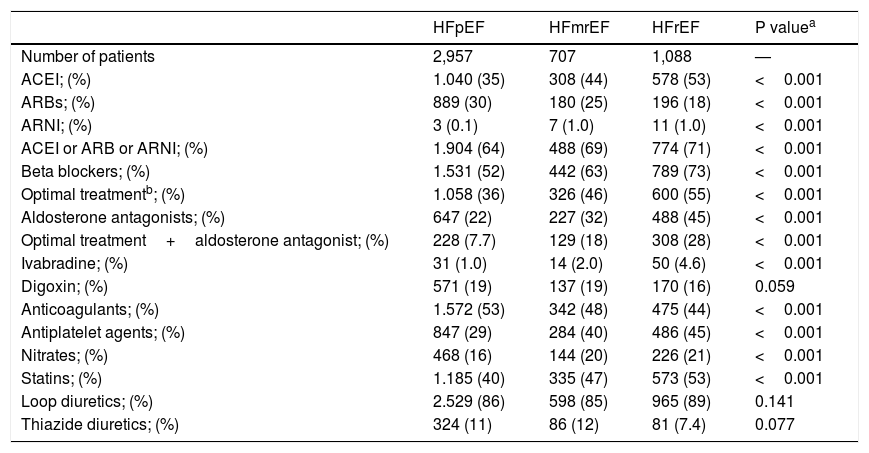There is great interest in better characterizing patients with heart failure (HF) with preserved ejection fraction (HF-PEF). The objective of this study is to determine the prevalence, progression over time and to describe the clinical and epidemiological characteristics of patients with HF-PEF.
MethodsFrom the National Registry of Heart Failure (RICA, prospective multicentre cohort study) we analysed patients consecutively admitted for HF in Internal Medicine wards over a period of 11 years (2008–2018).
Results4752 patients were included, 2957 (62.2%) with preserved ejection fraction. This prevalence remained constant from 2008 to 2019. Compared to patients with HF and reduced ejection fraction (HF-REF) patients with HF-PEF are older, more are female, there is a higher prevalence of hypertensive and valvular aetiology, they have a profile of different comorbidities and worse functional status. A high proportion of patients receive disease-modifying treatment for IC-REF (renin-angiotensin-aldosterone system inhibitors and beta-blockers). The overall mortality after one-year follow-up was 24% and 30% in the HF-PEF and the HF-REF, respectively. In the multivariate analysis, the risk of death was higher in patients with HF-REF compared to HF-PEF (OR 1.84; 95% CI [1.43–2.36]). The length of hospital stay was also lower in the HF-PEF patients but there were no differences in re-hospitalizations.
ConclusionsSixty percent of patients in the RICA registry have preserved ejection fraction. These patients have a higher comorbidity burden and a worse functional status, but lower mortality compared with HF-REF patients.
La caracterización de los pacientes con insuficiencia cardiaca (IC) con fracción de eyección preservada (IC-FEp) sigue teniendo interés. El objetivo fue conocer la prevalencia, características clínicas y epidemiológicas de la IC-FEp, y sus cambios en los últimos años.
MétodosAnalizamos el Registro RICA, de la Sociedad Española de Medicina Interna; estudio de cohorte multicéntrico y prospectivo, de pacientes ingresados por IC, consecutivamente en servicios de Medicina Interna, durante un periodo de 11 años (2008–2018).
ResultadosSe incluyeron 4752 pacientes, 2957 (62,2%) con IC-FEp, proporción que se mantuvo constante durante todo el periodo. En comparación con los pacientes con IC y fracción de eyección reducida (IC-FEr), los pacientes con IC-FEp tienen: mayor edad, predominio de sexo femenino, etiología hipertensiva y valvular, distinto perfil de comorbilidades y peor capacidad funcional (menor índice de Barthel). La mayoría de pacientes recibía un tratamiento similar al de la IC-FEr (inhibidores del sistema renina-angiotensina-aldosterona y beta-bloqueantes). La mortalidad global al año de seguimiento fue del 24% en la IC-FEp y 30% en la IC-FEr. En el análisis multivariante el riesgo de muerte fue superior en los pacientes con IC-FEr (HR 1,84; IC 95% [1,43–2,36]); la estancia hospitalaria fue inferior en la IC-FEp y no hubo diferencias en las re-hospitalizaciones.
ConclusionesLa IC-FEp se mantiene como una entidad muy prevalente. Supone el 60% de los ingresos por IC en los servicios de Medicina Interna. Se acompaña de una elevada comorbilidad y deterioro funcional pero su mortalidad es menor que la de la IC-FEr.














